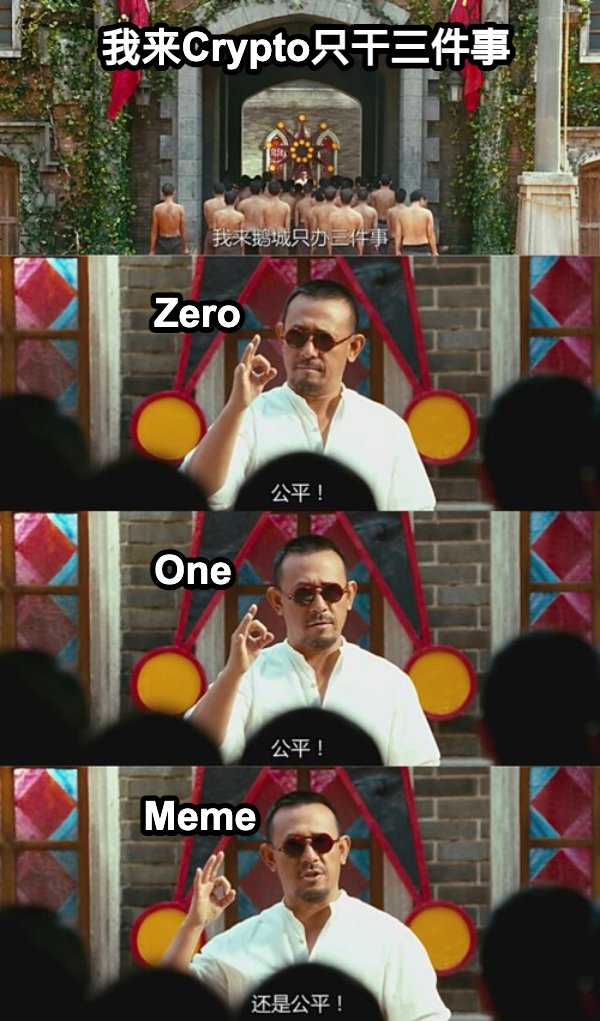KOL names are now starting to be prefixed with mysterious (0,1) symbols. Is it a secret code or a groundbreaking project? Learn about Zero @analysoor @Pland__
Zero is an innovative protocol on Solana: aimed at providing fair launches for Meme and NFT and solving liquidity issues.
Let's look at the fair launch issue using the inscription craze as a case:
Scientists use tools to rush ahead and mass-produce inscriptions. Do you think it's fair as a retail investor?
Large holders use the power of capital to enclose inscriptions. Do you think it's fair as a retail investor?
From Ordi, Atom to Rune, inscription projects are changing the way fair distribution is done, and the first to set the standard often end up benefiting the most.
Ordi defined inscriptions, and the subsequent popularity of inscriptions also established Ordi's status in the industry, benefiting Ordi's market value in return.
(0,1) is redefining a fair launch token distribution model. The more projects adopt this distribution model in the future, the more value will be fed back into the Zero ecosystem.
Zero's fair launch token distribution model (very interesting)
This is a way to exclude large holders/scientists from fair distribution by using block hash random numbers + participant input costs. Below is an example using Zero:
The Solana blockchain produces a block on average every 400 milliseconds.
If only one valid minting request is selected in each block, it would take about 1 hour and 30 minutes to mint a complete series of 10,000 NFTs.
Each block has a unique identifier called a block hash. This hash value is unknown until the block is confirmed, so it can be used as a random number generator.
Method for selecting the winning minting/transaction:
First, extract the first number from the block hash (e.g. "6MjVseMy2khAe1hXnhwFCMZ6FhzuBpaLaezFYnCxZQuN" contains 6), to determine the winning transaction.
Then, take out all the numbers from the hash (e.g. 6216), check if these numbers are even to determine from which direction to start counting transactions.
- Specific implementation:
If the number in the block hash is even, count from top to bottom; if it is odd, count in reverse.
Based on the extracted first number 6 from the block hash, select the first transaction containing the number "6".
- The only way to cheat is to make multiple minting requests in one block, but the clever design of (0,1) is that each minting has a cost, potentially causing heavy losses for large holders/scientists who want to dominate the entire block.
(0,1) not only solves the fair distribution problem, but also solves the liquidity problem incidentally.
All minting fees will be used to provide liquidity for tokens/NFTs.
For SPL tokens, half of the supply is given to successful minters, and the other half is used to create liquidity on AMM.
For NFT series, all supply is given to successful minters, and minting proceeds are used to build a Bid wall.
Market value comparison
Zero (47M) and Ordi (1.1B)
One (8M) and Sols (100M)
Upcoming Meme(?) and Silly (86M)
Next project timeline (Saturday 10pm Beijing time)
(0,1) The project team is very playful. In addition to the Zero token and One NFT assets, the project has announced the issuance of Memecoin.
It is the same fair lottery mode mentioned above, with each 0.05 Sol + 1 Zero, the continuous minting process will stimulate 48.5% of the Zero buy orders to be distributed to successful minters, and minting will last for 45 minutes.
In addition, One NFT holders can receive a 3% airdrop of Meme tokens.
Seeing such innovative fair launches, I'm really excited. Feel free to add any protocols you see using the Zero method for issuance.
Join TG, let's launch Memecoin fairly together on Saturday night.



免责声明:本文章仅代表作者个人观点,不代表本平台的立场和观点。本文章仅供信息分享,不构成对任何人的任何投资建议。用户与作者之间的任何争议,与本平台无关。如网页中刊载的文章或图片涉及侵权,请提供相关的权利证明和身份证明发送邮件到support@aicoin.com,本平台相关工作人员将会进行核查。




